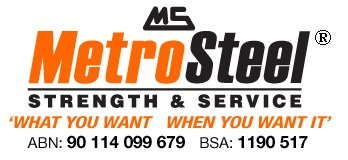If you’ve ever visited a fab shop before you’ll know that one of their main range of products is steel angles. On the surface of it, you mightn’t think that there was much of a need but you’d be wrong. They’re used all over the place: in the construction industry – strengthening and supporting property walls; the agricultural industry – used in the making of farming machinery; and the petrochemical/pharmaceutical industries – providing a consistent and uniform surface vital for tank manufacturers.
In addition steel angles are used to make frames and brackets and finer versions are even used as machinery parts. That’s not to mention the wide variety of other general fabrications. As you can see, the list and of course ways to use steel angle products, is endless. That’s why they can be a lucrative product for any half-decent fabrication shop.
So let’s delve a little more into them…
In essence despite the fact that steel angles come in an abundance of sizes, lengths, and even shapes there are really only two grades… These are
-
304 grade and….
-
316 grade
So what’s the difference?
304 grade steel is basic commercial grade steel. It’s easy to roll, form, and machine. It has excellent corrosion resistance and contains somewhere between 16 %-24% chromium. It’s easy to sanitise and is often used for kitchen fitting and or a variety of food applications. Despite this, it does have one weakness in that it’s susceptible to corrosion from saline environments. This is where 316 grade steel comes in…
316 has most of the physical properties that 304 steel angles have and even contains a similar material DNA. However 316 incorporates between 2-3% molybdenum and this is the key difference. This increases the resistance to corrosion particularly against most types of chlorides plus a wide variety of other industrial solvents.
For this reason, 316 steel angles are primarily used in the pharmaceutical and marine industries and in coastal areas where salt air may otherwise cause problems. In addition, because of 316’s non-reactive qualities and the fact that it contains molybdenum and nickel, this makes it more costly to manufacture. As a result it’s usually more expensive to buy.
So there you have it, everything you need to know about steel angles and more besides…well….almost!
There’s one thing I forgot to mention and that’s polishing!
Steel angles can also be polished to create a uniform and consistent surface. This makes it ideal for large drums and tanks where the finish needs to be perfect. It can be finished to a dull polish or a mirror polish depending upon specification, but as you can imagine the latter is used in areas such as food production where hygiene is key.
So, the next time you enter your local fab shop and see shelves stocked with steel angles, you’ll have a better idea exactly what they’re for.
In the meantime, if you need assistance with design or fabrication, then contact Metro Steel. We’re your local Deception Bay Fab Shop. Call us on 07 3204 1000 and talk to our experienced team who can help.
 Talk to an Expert (07) 3204 1000
Talk to an Expert (07) 3204 1000 Working Hours - Mon – Fri 7:00 AM – 4:00 PM
Working Hours - Mon – Fri 7:00 AM – 4:00 PM